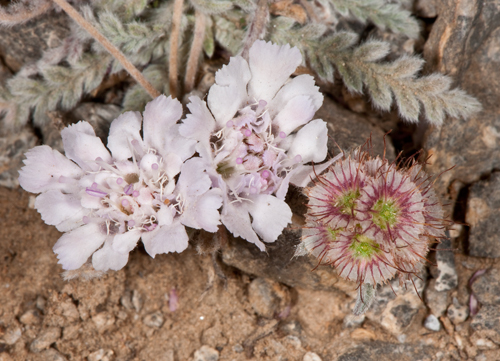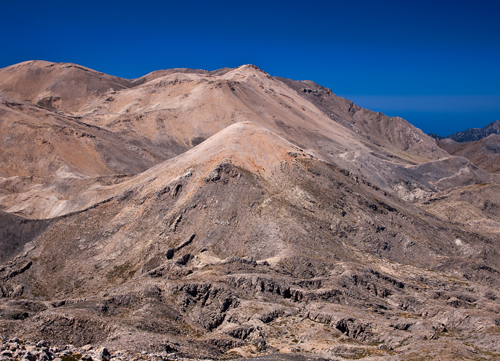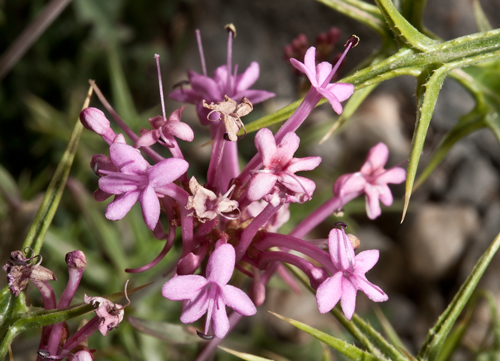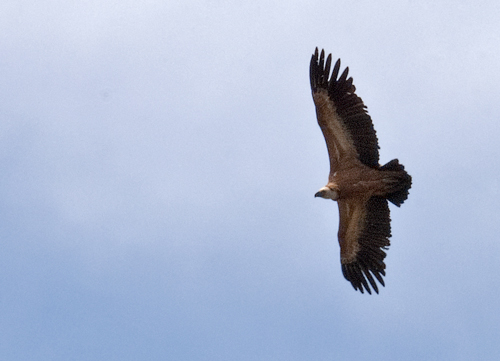Mountains
Lefka Ori (White Mountains)

The imposing mountain mass of Western Crete, with the unearthly Madares, as the alpines of Lefka Ori are called, is one of the largest habitat for the endemic flora of Greece, which attracts the interest of dozens of botanists of the planet. Lefka Ori are one of the most impressive mountains in Greece, a giant that stands out in the middle of the Mediterranean. The name Lefka Ori (White Mountains) comes from the fact that the peaks appear white almost all year round, from the snow and from the bare rocks that shine in the sun. They are located in western Crete, heading from west to east and occupy an area of 50 kilometres in length and 25 kilometres in width which constitutes almost 40% of the prefecture of Chania. It is impressive that there are 57 peaks exceeding 2,000 meters, while another 54 rise from 1,500 to 2,000 meters. The highest peak of the mountain is Pachnes at 2.453 meters, followed by Trocharis (2.402 m.), Mesa Soros (2,397 m.), Dipli Thodori (2,380 m.), Gavala (2,350 m.), Bournelos (2.342 m.), famous Svourichti (2.337 m.), Kakovoli (2.214 m.), Ornio (2,153 m.), Zaranokephala (2.140 m.), Melidaou (2.133 m.) and impressive Gigilos (2,080 m.). These peaks form a crown in the centre of which lies an extensive plateau, the famous “Mountain Desert”, a striking arid “lunar” plain, a landscape of unique beauty that creates a memorable feeling to anyone who comes here. From there one can walk to the top of Svourichti discovering in its path dozens of narrow endemic plants. The mountain has been formed mainly by limestone and dolomites and is characterised by many big gorges (about 20), dozens of caves, dolines and precipices that create an intensely labyrinthine morphology. From the gorges stands out the famous Samaria, followed by Tripiti, Agia Irini, Klados, Aradena, Sfakiano, Imbros, Eligia, Boriana, Therissos and Kavi. Here are some of the deepest caves of Greece, Gourgouthakas and Leontari. The most important plateaus of the mountain are Omalos, Anopoli, Askyfou, Tauri and Niatos. The mountainous desert hosts the Pavlia plateau, an area with black limestone which is the cretan equivalent of the Antarctic rocks. Lefka Ori are a enormous, barren mountain with few springs and its walking requires very good preparation, excellent physical condition and perfect sense of orientation. The peaks and a large area of the mountain are part of the National Park of Samaria and Lefka Ori.
The mountain is considered to be one of the world’s most important botanical paradises. Especially the alpine zone hosts on the slopes and cliffs many rare “diamonds” of the Greek flora. There are more than 1,500 species of plants throughout West Crete, while of the 650 species found on Lefka Ori, 25 of them are narrow endemic species and 100 are endemic to Crete. The mountain area is a place with bare, rocky peaks and deep canyons, where some scarce patches of junipers and oaks appear. In lower grounds lies the largest -and one of the last remaining on the island- forest of wild mediterranean cypress, while the perimeter of the mountain is covered by forests of turkish pine. The narrow endemic species of the area, many of which are included in the Red Data Book of Rare and Endangered Plants of Greece, include Anchusa caespitosa, Alyssum sphacioticum, Alyssum fragillimum, Anthemis samariensis, Bupleurum kakiskalae, Centranthus sieberi, Clematis elisabethae-carolae, Centaurea baldaccii, Cynoglossum sphacioticum, Dianthus sphacioticum, Dianthus juniperinus subsp. juniperinus, Euphorbia rechingeri, Euphorbia sultan-hassei, Helichrysum heldreichii, Hypericum kelleri, Lathyrus neurolobus, Myosotis solange, Nepeta sphaciotica, Noccaea zaffranii, Onobrychis sphaciotica, Ranunculus radinotrichus, Calamintha cretica, Silene pinetorum subsp. sphaciotica, Teucrium cuneifolium, Scilla nana subsp. nana, Lomelosia sphaciotica subsp. sphaciotica, Gagea omalensis and Campanula cretica. Endemic species of Crete found here are Alyssum lassiticum, Arum purpureospathum, Asplenium creticum, Bolanthus creutzburgii, Centaurea lancifolia, Centaurea idaea, orchids Cephalanthera cucullata, Epipactis cretica and Orchis spitzelii subsp. nitidifolia, Chaerophyllum creticum, Crepis auriculifolia, Crepis sibthorpiana, Cirsium morinifolium, Cuscuta atrans, Noccaea cretica, Sesleria doerfleri, Vincetoxicum creticum, Galium incanum subsp. creticum, Lomelosia albocincta, Asperula idaea, Colchicum cretense, Acantholemon androsaceum, Ebenus cretica, Origanum microphyllum, Sideritis syriaca subsp. syriaca (the mountain tea of Crete or as it called in the local dialect, malotira), Staehelina petiolata, Campanula creutzburgii, Fumana paflagonica subsp alpina, Tulipa bakeri, Tulipa cretica, Zelkova abelicea and Viola alba subsp cretica. Other interesting species here are Campanula aizoides, Arum cyrenaicum, Centaurea argentea subsp. argentea, Cephalaria squamiflora subsp. squamiflora, Datisca cannabina, Draba nuda, Paracaryum lithospermifolium subsp. cariense, Sibthorpia europaea, Acinos nanus, Cyclamen creticum and Paeonia clusii subsp. clusii.
Avifauna reaches 200 species of which half appear here during the seasonal migrations. At the top is one of the rarest birds in Greece and Europe, the lammergeier. This beautiful vulture lives on the steep cliffs, at altitudes from 800 to 2,500 meters patrolling over Madares. Lefka Ori is an important area for the griffon vulture and other large birds of prey like golden eagles, Bonelli’s eagles, buzzards, long-legged buzzards, peregrine falcons, lanner falcons, hobbies, Eleonora’s falcons and common kestrels. In the canyons and close to the peaks live flocks of choughs, a bird that is not so common in mainland Greece. Other birds of the area are chukar partridges, rock doves, eagle owls, little owls, scops owls, nightjars, swifts, alpine swifts, crag martins, woodlarks, tawny pipits, alpine accentors, dunnocks, wrens, black-eared wheatears, northern wheatears, black redstarts, stonechats, rock thrushes, blue rock thrushes, Rüppell’s warblers, woodchat shrikes, ravens, alpine choughes, linnets, goldfinches, ortolan buntings, rock buntings and corn buntings.
In the mountain live 3 species of amphibians and 12 species of reptiles. Amphibians are represented by the endemic cretan frog (Pelophylax cretensis), green toads and tree frogs. The reptiles of the mountain are Kotschy’s geckos, mediterranean house geckos, moorish geckos, ocellated skinks, balkan green lizards, endemic cretan wall lizards (Podarcis cretensis), cat snakes, balkan whip snakes and leopard snakes. The mammals of Lefka Ori reach the impressive number of 32 species. At the top is the famous cretan wild goat (Capra aegagrus subsp. cretica), which, despite the intense hunting of previous decades, manages to live in the most isolated areas of the mountain. The rare Cretan wild cat (Felis sylvestris subsp. cretensis) live in areas with more intense vegetation. Two small mammals, the cretan spiny mouse (Acomys minous) and the cretan shrew (Crocidura zimmermanni) live only in Crete, while the fauna is complemented with endemic subspecies of badgers, beech martens, hares, weasels, hedgehogs, dormouses and also 15 species of bats.
Photos: George Patroudakis (Kritiko Panorama)
The mountain is considered to be one of the world’s most important botanical paradises. Especially the alpine zone hosts on the slopes and cliffs many rare “diamonds” of the Greek flora. There are more than 1,500 species of plants throughout West Crete, while of the 650 species found on Lefka Ori, 25 of them are narrow endemic species and 100 are endemic to Crete. The mountain area is a place with bare, rocky peaks and deep canyons, where some scarce patches of junipers and oaks appear. In lower grounds lies the largest -and one of the last remaining on the island- forest of wild mediterranean cypress, while the perimeter of the mountain is covered by forests of turkish pine. The narrow endemic species of the area, many of which are included in the Red Data Book of Rare and Endangered Plants of Greece, include Anchusa caespitosa, Alyssum sphacioticum, Alyssum fragillimum, Anthemis samariensis, Bupleurum kakiskalae, Centranthus sieberi, Clematis elisabethae-carolae, Centaurea baldaccii, Cynoglossum sphacioticum, Dianthus sphacioticum, Dianthus juniperinus subsp. juniperinus, Euphorbia rechingeri, Euphorbia sultan-hassei, Helichrysum heldreichii, Hypericum kelleri, Lathyrus neurolobus, Myosotis solange, Nepeta sphaciotica, Noccaea zaffranii, Onobrychis sphaciotica, Ranunculus radinotrichus, Calamintha cretica, Silene pinetorum subsp. sphaciotica, Teucrium cuneifolium, Scilla nana subsp. nana, Lomelosia sphaciotica subsp. sphaciotica, Gagea omalensis and Campanula cretica. Endemic species of Crete found here are Alyssum lassiticum, Arum purpureospathum, Asplenium creticum, Bolanthus creutzburgii, Centaurea lancifolia, Centaurea idaea, orchids Cephalanthera cucullata, Epipactis cretica and Orchis spitzelii subsp. nitidifolia, Chaerophyllum creticum, Crepis auriculifolia, Crepis sibthorpiana, Cirsium morinifolium, Cuscuta atrans, Noccaea cretica, Sesleria doerfleri, Vincetoxicum creticum, Galium incanum subsp. creticum, Lomelosia albocincta, Asperula idaea, Colchicum cretense, Acantholemon androsaceum, Ebenus cretica, Origanum microphyllum, Sideritis syriaca subsp. syriaca (the mountain tea of Crete or as it called in the local dialect, malotira), Staehelina petiolata, Campanula creutzburgii, Fumana paflagonica subsp alpina, Tulipa bakeri, Tulipa cretica, Zelkova abelicea and Viola alba subsp cretica. Other interesting species here are Campanula aizoides, Arum cyrenaicum, Centaurea argentea subsp. argentea, Cephalaria squamiflora subsp. squamiflora, Datisca cannabina, Draba nuda, Paracaryum lithospermifolium subsp. cariense, Sibthorpia europaea, Acinos nanus, Cyclamen creticum and Paeonia clusii subsp. clusii.
Avifauna reaches 200 species of which half appear here during the seasonal migrations. At the top is one of the rarest birds in Greece and Europe, the lammergeier. This beautiful vulture lives on the steep cliffs, at altitudes from 800 to 2,500 meters patrolling over Madares. Lefka Ori is an important area for the griffon vulture and other large birds of prey like golden eagles, Bonelli’s eagles, buzzards, long-legged buzzards, peregrine falcons, lanner falcons, hobbies, Eleonora’s falcons and common kestrels. In the canyons and close to the peaks live flocks of choughs, a bird that is not so common in mainland Greece. Other birds of the area are chukar partridges, rock doves, eagle owls, little owls, scops owls, nightjars, swifts, alpine swifts, crag martins, woodlarks, tawny pipits, alpine accentors, dunnocks, wrens, black-eared wheatears, northern wheatears, black redstarts, stonechats, rock thrushes, blue rock thrushes, Rüppell’s warblers, woodchat shrikes, ravens, alpine choughes, linnets, goldfinches, ortolan buntings, rock buntings and corn buntings.
In the mountain live 3 species of amphibians and 12 species of reptiles. Amphibians are represented by the endemic cretan frog (Pelophylax cretensis), green toads and tree frogs. The reptiles of the mountain are Kotschy’s geckos, mediterranean house geckos, moorish geckos, ocellated skinks, balkan green lizards, endemic cretan wall lizards (Podarcis cretensis), cat snakes, balkan whip snakes and leopard snakes. The mammals of Lefka Ori reach the impressive number of 32 species. At the top is the famous cretan wild goat (Capra aegagrus subsp. cretica), which, despite the intense hunting of previous decades, manages to live in the most isolated areas of the mountain. The rare Cretan wild cat (Felis sylvestris subsp. cretensis) live in areas with more intense vegetation. Two small mammals, the cretan spiny mouse (Acomys minous) and the cretan shrew (Crocidura zimmermanni) live only in Crete, while the fauna is complemented with endemic subspecies of badgers, beech martens, hares, weasels, hedgehogs, dormouses and also 15 species of bats.
Photos: George Patroudakis (Kritiko Panorama)
Πως θα πάτε
Lefka Ori is located in the southeast of the prefecture of Chania. Prefer the villages of the south (Aradena, Anopoli, Loutro, Chora Sfakion), where local farmers, shepherds and field walkers know the mountain very well. The best time to visit Lefka Ori is from June to October. That’s when most of the rare flowers bloom. Be careful though, the size of the mountain and the absence of springs require careful preparation. The best thing would be to climb with a guide or a shepherd.Εμφάνιση στο χάρτη
click to see the place on the map(Latitude: 35.297483770327354, Longitude:24.078934531244272)
Social Networks
Also Read

Vardousia
Vardousia mount is characterised by a big number of impressive peaks and extensive alpine meadows which hold one of the richest flora biodiversity in Greece.
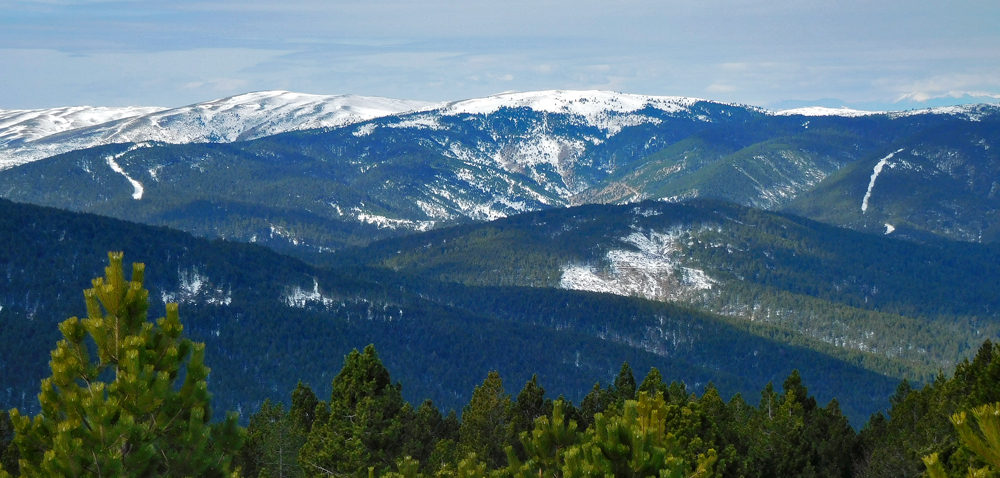
Vermio
A big mountain with gentle slopes and many peaks that dominates among the plains of central Macedonia and is distinguished by the presence of many rare species of flora and fauna.



